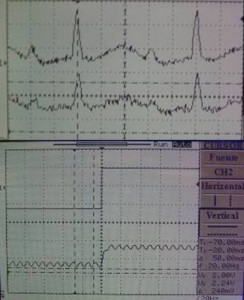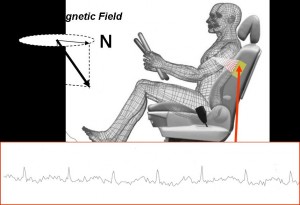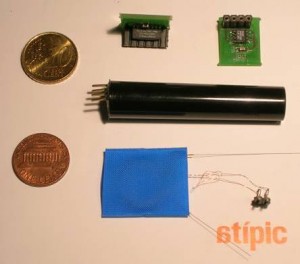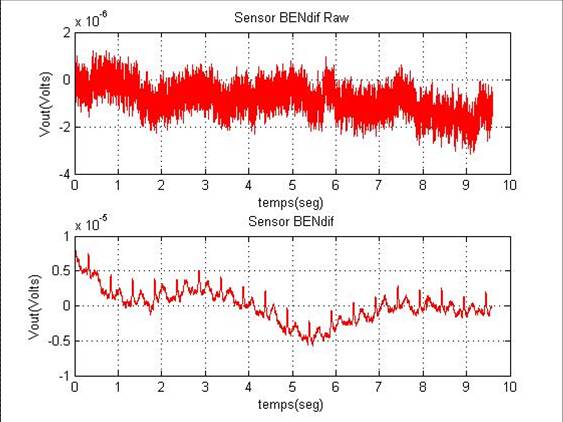This week I would like to explain an unsuccessful project. By unsuccessful I mean we don’t achieve the original goal. Nevertheless, we have learned a lot on the way and we hope we will use the developed know-how elsewhere.
The project startsed with our neighbours, a medical electronic engineering company (www.advancare.com). We try to combine their expertise on biomedical signal processing and the Atipic magnetic background (www.atipic-pro.eu). As biomagnetic signals of the brain are very weak, we choosen try to measure the cardiographic signals. Magnetocardiography is a fancy subject, but for using it as substitute of electrocardiography, the use of cryogenic SQUID sensors is needed. As the two companies involved we were quite small, focus on developing an equipment on the Million Euro range was out of our reach.
However, if you are not a cardiologist (or even so), may be you don’t need to have the whole cardiographic wave. Just using the time between successive R-R peak (the higher peak in the wave) you can get a lot of medical interesting information, as it does the sport pulsemeter you use for monitor your efforts when running.
Looking for possible applications, we contacted an automotive supplier who was interested on drowsiness detection. As we, at ATIPIC we have experience with cars and magnetic sensors we start to work: heart rate was a physiologic signal that could, potentially, alert when people fall asleep. If we were able to place a sensor on the seat or the seat belt, and measure how the beat rate changes with time, we can potentially save the life of ¼ of 1/3 of the people killed in cars accidents! And for this application, being contactless is a pre-requisite (the system should not require the person to be wired)
First we focus on commercially available sensors (automotive will need a solution on the range of few euros by unit). We built a magnetic dipole and feed it wit a cardiographic signal. Our first target was to measure 1 nT on lab environement. As the Earth Magnetic Field is in the range of 50,000 nT, it was a nice challenge.
As you probably have guessed, of-the-shelf sensors were not suitable. We revised different approaches, and my partner Dr. Maria Benelmekki (now at Universidade do Minho), provided us an elegant solution. We decide to call the sensor BEN, ‘officially’ for Barcelona Enhanced Noise, but also as a recognition to their contribution.
With this new, home-made, and cheap sensor, we were able to measure magnetic fields on the desired magnitude (1/50,000 the Earth). However we get a nice surprise. Due the low background noise, we were measuring the 50 Hz of the electrical wires of the lab. That was an interference we will not have in a car, but it was limiting our efforts to push the sensor sensitivity limits.

Fig 4. Magnetic signals for a magnetic dipol with a current simulating heart beat (top) and noise generated by ac current on the lab (50 Hz)
We solved easily using a zero gauss chamber (basically several concentric cylinders of permalloy, a very high permeability material). Once we see the sensor was working in the picoTesla range, the point was how to use it out of the chamber.

Fig 5. Biomagnetic signals measured by BEN sensor in a shielded environment. Single sensor (left) and differential configuration (rigth)
We builded a differential configuration, some digital filtering, and, voilà!!! The heart-like signal appeared. (OK, it was not so straightforward, but my goal is encourage you to use magnetic sensors).
By this time, the parallel experiments to determine how to use beat rate as drowsiness detector were unconclusive, and the industrial partner cancelled the project due the technical risk (it was the right decision: their goal was to have a potential product in 3 years, and the results proved we will need additional basic research far beyond their budget and timing).
Then this is by now the end of the story: we have a very nice sensor we can still improve, we have proved it works fine measuring magnetic fields below 1 nanoTesla, but we have not application to working on.
If you have some ideas, just contact me… we will be glad to discuss how to cooperate!!! (martinez@atipic-pro.eu)




